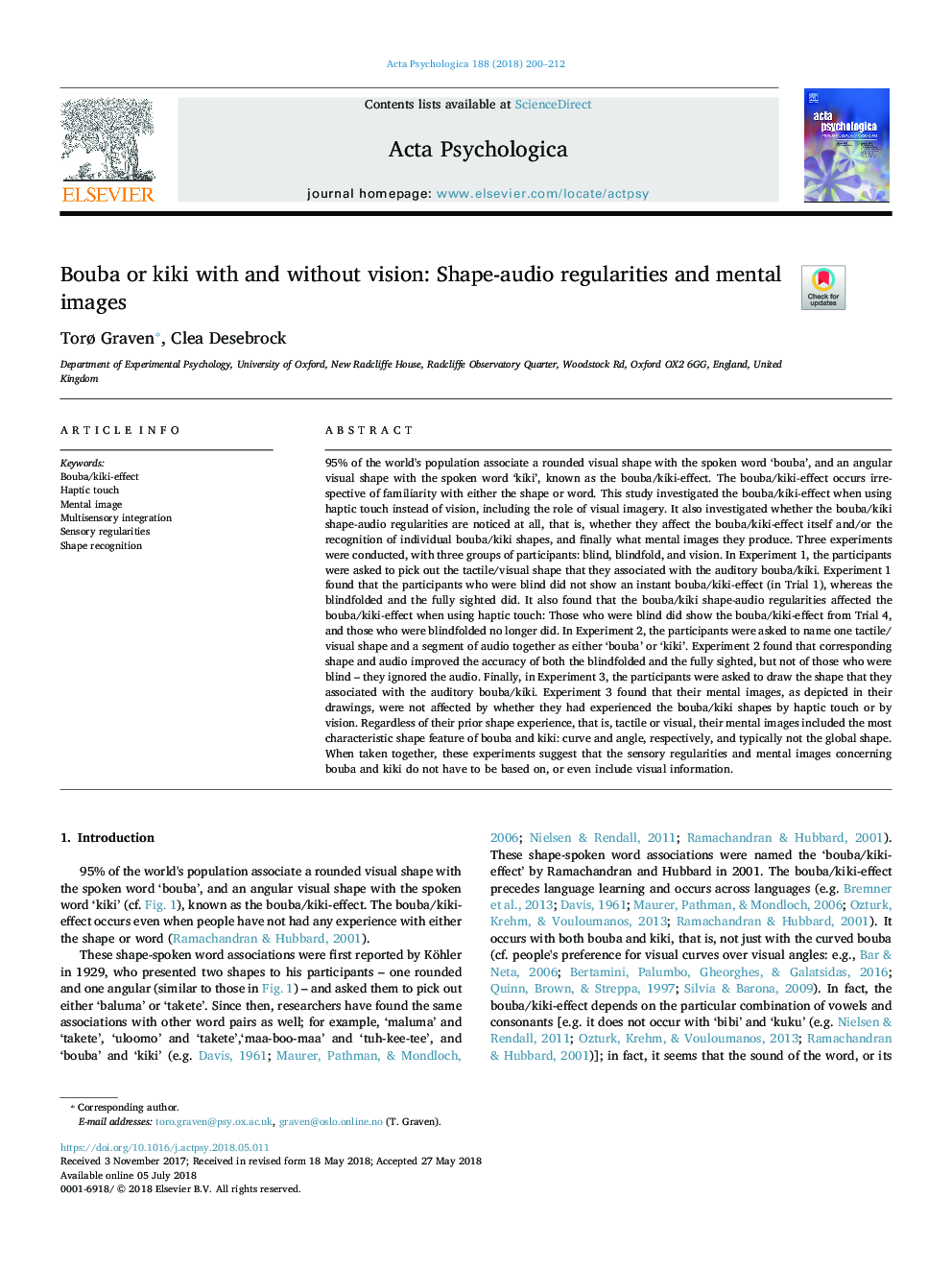| کد مقاله | کد نشریه | سال انتشار | مقاله انگلیسی | نسخه تمام متن |
|---|---|---|---|---|
| 7276633 | 1473570 | 2018 | 13 صفحه PDF | دانلود رایگان |
عنوان انگلیسی مقاله ISI
Bouba or kiki with and without vision: Shape-audio regularities and mental images
ترجمه فارسی عنوان
بوبا یا کیکی با و بدون دید: قانونهای صوتی شکل و تصاویر ذهنی
دانلود مقاله + سفارش ترجمه
دانلود مقاله ISI انگلیسی
رایگان برای ایرانیان
موضوعات مرتبط
علوم زیستی و بیوفناوری
علم عصب شناسی
علوم اعصاب شناختی
چکیده انگلیسی
95% of the world's population associate a rounded visual shape with the spoken word 'bouba', and an angular visual shape with the spoken word 'kiki', known as the bouba/kiki-effect. The bouba/kiki-effect occurs irrespective of familiarity with either the shape or word. This study investigated the bouba/kiki-effect when using haptic touch instead of vision, including the role of visual imagery. It also investigated whether the bouba/kiki shape-audio regularities are noticed at all, that is, whether they affect the bouba/kiki-effect itself and/or the recognition of individual bouba/kiki shapes, and finally what mental images they produce. Three experiments were conducted, with three groups of participants: blind, blindfold, and vision. In Experiment 1, the participants were asked to pick out the tactile/visual shape that they associated with the auditory bouba/kiki. Experiment 1 found that the participants who were blind did not show an instant bouba/kiki-effect (in Trial 1), whereas the blindfolded and the fully sighted did. It also found that the bouba/kiki shape-audio regularities affected the bouba/kiki-effect when using haptic touch: Those who were blind did show the bouba/kiki-effect from Trial 4, and those who were blindfolded no longer did. In Experiment 2, the participants were asked to name one tactile/visual shape and a segment of audio together as either 'bouba' or 'kiki'. Experiment 2 found that corresponding shape and audio improved the accuracy of both the blindfolded and the fully sighted, but not of those who were blind - they ignored the audio. Finally, in Experiment 3, the participants were asked to draw the shape that they associated with the auditory bouba/kiki. Experiment 3 found that their mental images, as depicted in their drawings, were not affected by whether they had experienced the bouba/kiki shapes by haptic touch or by vision. Regardless of their prior shape experience, that is, tactile or visual, their mental images included the most characteristic shape feature of bouba and kiki: curve and angle, respectively, and typically not the global shape. When taken together, these experiments suggest that the sensory regularities and mental images concerning bouba and kiki do not have to be based on, or even include visual information.
ناشر
Database: Elsevier - ScienceDirect (ساینس دایرکت)
Journal: Acta Psychologica - Volume 188, July 2018, Pages 200-212
Journal: Acta Psychologica - Volume 188, July 2018, Pages 200-212
نویسندگان
Torø Graven, Clea Desebrock,
